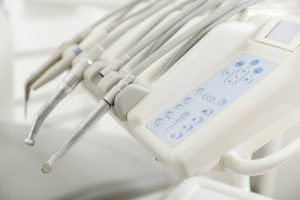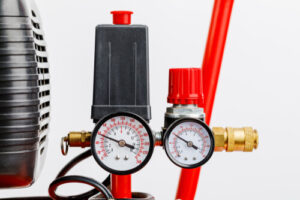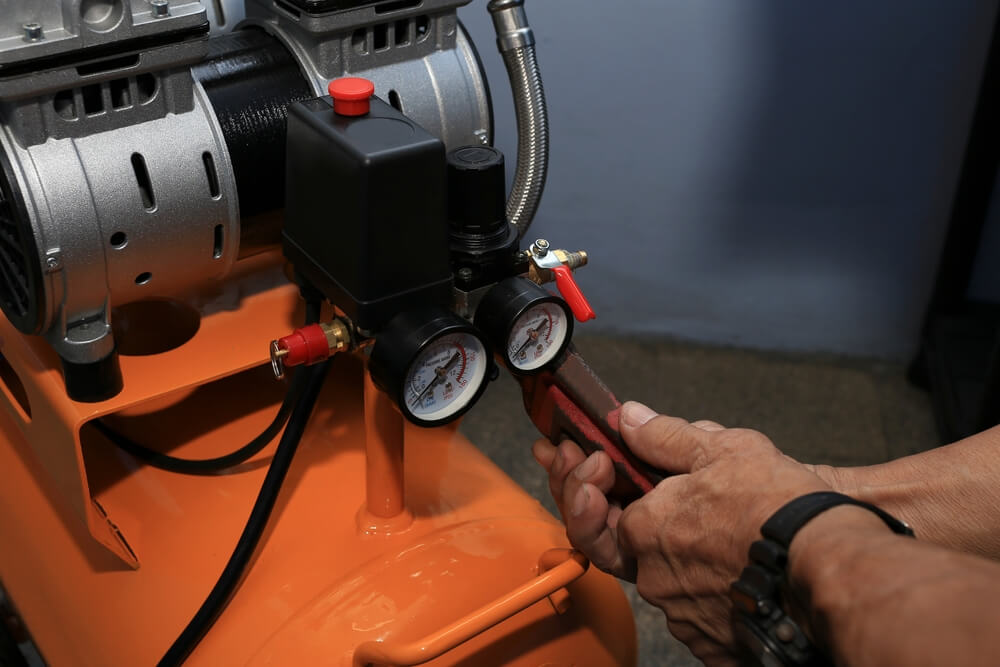The upright air compressor in the dental industry has become a game-changer, revolutionising practices with its compact design and robust performance. This article will explore its crucial role in enhancing dental procedures, offering a blend of reliability and innovation. Discover why these compressors are indispensable in modern dental care, as we unveil the secrets behind their growing popularity among professionals. Stay tuned for an insightful journey into this essential dental tool.
What are Dental Upright Air Compressors
Dental upright air compressors are essential equipment in dental practices, offering a reliable source of compressed air for various applications, including powering dental tools and instruments. These compressors are designed with specific features tailored to the unique needs of dental settings, ensuring efficiency, cleanliness, and minimal noise. One crucial aspect of their design is the vertical configuration, optimising space utilisation within dental clinics.
The compressors often boast a cast iron construction for durability and longevity, addressing the importance of reliability in dental operations. Let’s delve into key points surrounding dental upright air compressors, emphasising their features, performance, and factors to consider for optimal functionality.
- Vertical Design and Space Optimisation: Dental upright air compressors are specifically crafted vertically, aligning with dental clinics’ spatial constraints. This configuration ensures efficient use of space, a critical consideration in dental settings where every square meter counts.
- Cast Iron Construction for Durability: The use of cast iron in constructing these compressors underscores their durability and robustness. This material choice is vital in maintaining reliability over time, a non-negotiable aspect in dental practices where uninterrupted operation is paramount.
- Performance and Pressure Delivery: These compressors deliver consistent and controlled air pressure, a crucial factor in powering dental tools with precision. The pressure range provided by these compressors caters to the varied needs of dental procedures, contributing to their suitability in dental applications.
- Noise Reduction for Patient Comfort: Dental procedures often involve close patient proximity, making noise reduction a significant consideration. Dental upright air compressors are engineered to operate quietly, creating a more comfortable environment for dental practitioners and patients.
- Oil-Free Compressors for Clean Air Supply: Maintaining a sterile environment is imperative in dental clinics, and upright air compressors often feature an oil-free design. This ensures that the compressed air supplied to dental tools is free from contaminants, meeting stringent hygiene standards.
- Maintenance and Reliability: Efficient maintenance is facilitated through features that reduce the start-up load and enhance overall system reliability. Dental practitioners can trust these compressors for consistent performance, minimising disruptions in patient care.
- Consideration for Australian Conditions: Dental practitioners in Australia can benefit from considering compressors designed with the Australian environment in mind. Understanding the specific needs of the Australian dental industry ensures that the chosen compressor aligns with local conditions and regulations.
Maintenance and Care for Dental Upright Air Compressors
Maintenance and care for dental upright air compressors are paramount in ensuring the longevity, life, efficiency, and hygienic performance of these critical devices in dental practices. By adhering to proper maintenance practices, dental practitioners can mitigate potential issues, enhance reliability, and contribute to a sterile environment essential for optimal patient care.
Maintenance Tips:
- Regular Maintenance Checks: Initiate routine maintenance checks to assess the overall condition of the dental upright air compressor. Regular inspections enable early detection of potential issues, ensuring prompt resolution and preventing prolonged downtimes.
- Oil-Free Compressor Inspection: For compressors featuring an oil-free design, meticulous inspections are crucial to verify the continued absence of oil contaminants in the compressed air supply. Maintaining the sterility of the air ensures compliance with stringent hygiene standards in dental settings.
- Scheduled Cleaning and Filter Replacements: Establish a schedule for thoroughly cleaning the compressor components and promptly replacing air filters. This routine maintenance practice prevents the accumulation of debris, maintains air quality, and sustains the compressor’s optimal performance.
- Periodic Lubrication for Durability: If applicable, adhere to manufacturer recommendations for periodic lubrication of compressor components. Lubrication enhances the durability of moving parts, contributing to the overall reliability of the dental upright air compressor.
- Noise Reduction System Inspection: If equipped, inspect and assess the noise reduction system. Ensuring the proper functioning of noise reduction features contributes to a quieter environment, prioritising patient comfort during dental procedures.
- Emergency Shutdown Procedures: Familiarise dental staff with emergency shutdown procedures in case of unexpected malfunctions. Promptly shutting down the compressor during emergencies prevents potential damage and safeguards the device’s overall functionality.
- Training for Dental Staff: Conduct training sessions on proper usage, maintenance, and emergency protocols associated with the dental upright air compressor. Well-informed staff contributes to the longevity and efficient operation of the equipment.
Application of Dental Upright Air Compressors in Dentistry
 Dental upright air compressors play a pivotal role in dentistry, serving as indispensable components for a myriad of applications within dental practices. These specialised compressors are designed to provide a clean and controlled compressed air source, powering a diverse range of dental tools and instruments.
Dental upright air compressors play a pivotal role in dentistry, serving as indispensable components for a myriad of applications within dental practices. These specialised compressors are designed to provide a clean and controlled compressed air source, powering a diverse range of dental tools and instruments.
Upright Air Compressors Applications in Dentistry:
- Powering Dental Handpieces: Dental handpieces, including drills and grinders, rely on compressed air for precision and efficiency in various dental procedures, such as cavity preparations, crown placements, and tooth restorations.
- Air Drying and Cleaning: Compressed air is utilised for air drying and cleaning procedures, ensuring a dry and clear field of view during treatments. This application is crucial in tooth etching, bonding, and other adhesive procedures.
- Surgical Procedures: In surgical settings, dental upright air compressors power various surgical instruments, facilitating oral surgeries, extractions, and other complex dental procedures. The controlled delivery of compressed air enhances the precision and success of these interventions.
- Diagnostic Tools: Various diagnostic tools, including air-driven probes and air syringes, are powered by compressed air. These tools assist in comprehensive dental examinations, facilitating accurate diagnoses and treatment planning.
- Prophylaxis and Cleaning: Compressed air is essential for dental prophylaxis equipment, including air polishers and air-driven scalers. These tools aid dental hygienists in thorough teeth cleaning and plaque removal during routine hygiene appointments.
- Air Abrasion Systems: Dental upright air compressors are integral to air abrasion systems for minimally invasive procedures. These systems utilise compressed air to propel abrasive particles, enabling precise tooth preparations with minimal patient discomfort.
- Orthodontic Applications: In orthodontics, compressed air powers tools and instruments used in the placement and adjustment of orthodontic appliances, contributing to the efficiency of orthodontic treatments.
- Patient Comfort: Beyond clinical applications, dental upright air compressors contribute to patient comfort by providing a quiet and controlled compressed air source. The reduced noise levels enhance the overall patient experience during dental procedures.
Troubleshooting Tips for Dental Upright Air Compressors
 Troubleshooting dental upright air compressors is crucial to maintaining the seamless operation of these essential devices in dental practices. When faced with issues, prompt and accurate troubleshooting can prevent disruptions in free air due to dental procedures, ensuring the continuous delivery of compressed air for various applications. Understanding common challenges and implementing effective solutions is key to optimising the performance and reliability of dental upright air compressors in the dental setting.
Troubleshooting dental upright air compressors is crucial to maintaining the seamless operation of these essential devices in dental practices. When faced with issues, prompt and accurate troubleshooting can prevent disruptions in free air due to dental procedures, ensuring the continuous delivery of compressed air for various applications. Understanding common challenges and implementing effective solutions is key to optimising the performance and reliability of dental upright air compressors in the dental setting.
Troubleshooting Tips:
- Inadequate Pressure Delivery: If the compressor fails to deliver sufficient pressure, check for air leaks, inspect and replace clogged air filters, and verify that the pressure regulator is properly adjusted. Sometimes, the issue may be related to the compressor’s pump or motor, requiring professional attention.
- Unusual Noise Levels: Abnormal noise levels may indicate loose components, damaged bearings, or issues with the noise reduction system. Conduct a thorough inspection to identify and tighten loose parts, lubricate components as needed, and address any damage to ensure a quieter operation.
- Oil Contamination in Oil-Lubricated Compressors: For compressors utilising oil lubrication, oil in the compressed air can indicate a problem with the oil separator or a potential leak. Inspect the system, replace faulty components, and monitor oil levels regularly to prevent contamination.
- Excessive Heat Generation: Overheating can result from inadequate ventilation, worn-out components, or motor issues. Ensure proper ventilation, replace worn-out parts, and conduct routine maintenance to prevent excessive heat buildup and potential damage.
- Intermittent Operation: Intermittent operation may be caused by pressure switch issues, electrical problems, or issues with the motor. Verify the pressure switch settings, check electrical connections, and inspect the motor for any anomalies, addressing these issues promptly to maintain consistent operation.
- Water Accumulation in the Air Lines: Water in the airlines can affect the quality of compressed air and lead to equipment damage. Install proper moisture traps and drains, regularly drain the compressor tank, and monitor the overall moisture management system to prevent water accumulation.
- Emergency Shutdown Malfunctions: In emergency shutdown malfunctions, check for electrical faults, inspect the emergency shutdown system, and ensure that safety mechanisms are functioning correctly. Regularly test emergency shutdown procedures to guarantee their effectiveness in critical situations.
- Inconsistent Pressure Regulation: Issues with pressure regulation can arise from a malfunctioning pressure regulator or clogged air filters. Inspect and clean filters regularly and replace faulty pressure regulators to maintain consistent and controlled pressure delivery.
In summary, maintaining optimal performance in dental practices requires diligent care and troubleshooting of upright air compressors. These essential devices power a range of precision tools in the dental industry. Addressing common issues, from pressure and free air delivery to noise reduction and consistent regulation, ensures a seamless workflow. Proactive troubleshooting and regular maintenance are key to the longevity and efficiency of these compressors, crucial for delivering high-quality patient care. In the dynamic dental industry, a well-maintained upright air compressor is indispensable, supporting practitioners in providing precise and reliable services.
To ensure your dental practice operates at its best, trust the reliability of Cattani Compressors Australia. If you encounter any issues or need assistance with your upright air compressor, please call us at (02) 8880 9257. Our team is dedicated to providing top-notch support, ensuring your equipment performs optimally for precision and efficiency in every dental procedure. Elevate your practice with Cattani – your trusted partner in dental compressed air solutions.
References
ISO 11011:2019 – Compressed air — Energy efficiency and consumption
https://www.iso.org/standard/75435.html
Portable air pump of the inflating device
https://www.researchgate.net/figure/Portable-air-pump-of-the-inflating-device-a-When-compressed-b-When-inflated_fig13_225088213
Techtronic Industries Australia Pty Limited — Ryobi Airwave 40L 1.8HP Upright Air Compressor
https://www.productsafety.gov.au/recalls/techtronic-industries-australia-pty-limited-%E2%80%94-ryobi-airwave-40l-18hp-upright-air-compressor
Compressed Air – Information Sheet
https://www.safeworkaustralia.gov.au/system/files/documents/1703/compressed-air-information-sheet.pdf



